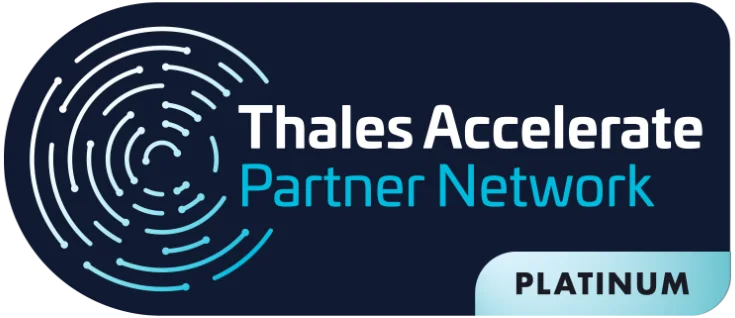IoT in Healthcare (Internet of Things) is impacting and changing the sector, making providers smarter and more efficient, making preventive care even more accessible.
With increasing technological innovation in the segment, IoT technology is starting to have a real impact on the healthcare sector.
According to a Markets and Markets study, the medical handheld devices market is expected to reach $12.1 billion by 2021.
These portable devices are far beyond the scope of fitness tracking. New devices can monitor heart attacks, signs of stroke and measure and control insulin levels of diabetic patients.
The Internet of Things, as it is also known, has ushered in a new era of innovation, IoT-linked applications include everything from transportation and manufacturing to smart home control and automation and even entertainment.
It is important to note that the healthcare sector also benefits from the Internet of Things. When applied correctly, IoT in Healthcare has enormous potential. From medication management to patient monitoring, its uses are almost limitless.
Key benefits of IoT in Healthcare
As the word itself suggests, Internet of Things is a network of devices interconnected through a software (IoT gateway).
With the help of sensors, an IoT device detects physical properties such as temperature, pressure, movement, weight, light, and converts them into electrical signals. An IoT gateway then receives the signal and processes it into useful information.
The electrical signal generated by IoT devices can be used to solve complex problems of daily life. As a common use case in healthcare, it enables real-time tracking of medical equipment such as nebulizers, medical kits, oxygen pumps and wheelchairs.
In practice, IoT in Healthcare is transforming the sector in terms of how apps, devices and people interact when delivering healthcare solutions.
Below are some of the key benefits of adopting IoT in the healthcare sector:
1. IoT applied to remote monitoring
Thanks to IoT in Healthcare, you don’t have to rush to the hospital or stay hospitalized every time you need a healthcare professional to keep an eye on your health.
Your doctor can monitor your health in hospital while you are lying in bed. This also with the help of devices.
Remote monitoring has helped thousands of heart and blood pressure patients who need regular check-ups of their health conditions.
IoT devices, such as fitness bracelets or smartwatches, can monitor patients’ blood sugar and heart rate and send real-time information to doctors.
In addition, an IoT device can from IoT, such as unusual heart rate, and send real-time alerts to your doctor or family members.
2. Affordable healthcare using the Internet of Things
IoT has made healthcare accessible to more patients. Remote monitoring saves patients a lot of time and money spent on unnecessary doctor visits or readmissions.
In addition, IoT helps hospitals efficiently manage their administrative operations, such as automating appointment scheduling or real-time tracking of available beds.
It saves the cost of manual labor and consequently reduces the cost of healthcare.
3. Delivering the best treatment through IoT devices
Together with sophisticated health analytics, the Internet of Things can generate useful and actionable insights that can help healthcare professionals provide better patient care.
Real-time data collected through IoT devices can be processed and documented to make an insightful report on patient history and behavior. It helps doctors better understand the nature of the disease and provide better treatment.
4. Efficient diagnosis of diseases
Combined with advanced health analytics, IoT data collected from a patient can help in better diagnosis.
The insight generated through analytics can help healthcare professionals detect symptoms of diseases at an early stage.
With the help of Artificial Intelligence and advanced computing technologies, the Internet of Things can automatically detect and alert patients of upcoming health risks.
5. Easy management of equipment and medicines
Thanks to IoT, you can now store huge piles of medicines and equipment in an organized way. This leaves no room for human error or mismanagement of items.
With the help of real-time tracking, you can have efficient access to all the items and hence retrieve them efficiently and effectively with minimal effort.
6. Reduce human error
Some healthcare operations need precision and accuracy, such as determining a candidate’s eligibility to test a new drug.
Manual data handling, especially when a large volume of data is involved, can increase the chances of high human errors. On the other hand, the Internet of Things ensures that data is error-free.
7. Efficient management of electronic health records
Suppose you rush to the hospital because of a minor chest pain and the doctor needs to understand your medical history. In minutes, and with a few clicks, he can have access to well-documented reports of his medical history stored in the database.
While data security may be a concern, IoT devices may come with their own, more secure, encryption protocols developed especially for IoT devices.
8. Better insurance management
Insurers are using the Internet of Things to bring more transparency into their operations, such as underwriting, claims management and risk assessment.
Also, with IoT devices, it has become easier to detect fraud.
Many leading companies reward their customers if they show better precautions during treatment and reduce insurance costs. Companies determine the right candidates based on IoT data over a significant period.
9. Seamless communication between hospitals
As IoT helps to keep an electronic record of medical history, now you no longer need to carry a folder of documents of your previous diagnosis. It also helps hospitals share useful and necessary information in an integrated and cost-effective way.
In addition, effective collaboration of hospitals enhances health analysis and research. The huge volume of data collected from patients from various hospitals could be useful for healthcare scientists.
10. Efficient Development of Medicines
Drug development is an expensive and time-consuming process. When developing a new medicine, pharmaceutical scientists use iterative processes that involve chemical reactions between various reagents and ingredients.
With the help of IoT and health analytics, they can predict the outcome even without performing reactions.
In addition, IoT helps pharmaceutical companies determine the right candidates for their new drugs. Based on the profile of the ideal candidate and the data collected from various candidates, IoT suggests suitable matches for your tests.
The benefits of the Internet of Things in healthcare are enormous. As we have seen, when integrated with healthcare, the Internet of Things can be used to increase the efficiency of hospital operations, improve patient monitoring and even provide affordable solutions for wearable technology.
However, whenever the network connection works, there will be security issues, and the Internet of Things is no exception in the healthcare field.
Internet of Things devices are easily affected. While people used to only worry about patient data and compliance with regulatory requirements, they still have to worry about the potential risks from cybercriminals.
Thales Luna hardware security modules (HSMs) enable continuous cybersecurity support
A hardware security module (HSM) is a physical device that provides extra security for sensitive data. This type of device is used to provide cryptographic keys for critical functions such as encryption, decryption and authentication for the use of applications, identities and databases.
To give an idea, companies can use a hardware security module, for example, to protect trade secrets of significant value, ensuring that only authorized individuals can access the HSM to complete an encryption key transaction, i.e. to control access properly and if necessary with multi-factor authentication, which is a safety recommendation adopted today.
In addition, the entire lifecycle of the encryption key, from creation, revocation, management and storage in the HSM.
Digital signatures can also be managed through an HSM and all access transactions are logged to create an audit trail. In this way, a hardware security module can help hospitals move confidential information and processes from paper documentation to a digital format.
Thales Hardware Security Modules provide the highest level of security by always storing cryptographic keys in hardware. In addition, they provide a secure encryption foundation as the keys never leave the device validated by FIPS 140- 2, Level 3, , intrusion resistant and tamper-proof.
Encryption in HSM: controlling access to confidential material on IoT devices in healthcare
In addition, Thales also implements operations that make deploying secure HSMs as easy as possible, and our HSMs are integrated with the Thales Crypto Command Center for fast and easy partitioning, reporting, and monitoring of cryptographic resources.
Thales’ HSMs follow strict design requirements and must pass rigorous product verification tests, followed by real-world application testing to verify the security and integrity of each device.
With Thales hardware security modules, you can:
- Address compliance requirements with solutions for Blockchain, LGPD and IoT, performing hardware key storage, transactional acceleration, certificate signing, code or document signing, bulk key generation and data encryption;
- The keys are generated and always stored in an intrusion-resistant, tamper-proof, FIPS-validated device with the strongest levels of access control;
- Create partitions with a dedicated Security Office per partition and segregate by administrator key separation.
Therefore, Thales Luna HSMs have been implementing best practices in hardware, software, and operations that make deploying HSMs as easy as possible.
Thales Luna HSMs meet stringent design requirements and must pass rigorous product verification testing, followed by real-world application testing to verify the safety and integrity of each device.
The main advantages of Thales HSM Luna are the following:
-
The keys always remain in the hardware
Protect your most sensitive cryptographic keys in our FIPS 140-2 Level 3 HSMs.
Storing your keys in our high-security vault ensures that they are protected against tampering, unlike alternative solutions on the market.
With the key-in-hardware approach, apps communicate through a client with keys stored in the HSM and the keys never leave the device.
-
High performance
Benefit from best-in-class performance across a range of algorithms, including ECC, RSA and AES-GCM, to satisfy the most demanding applications and meet service level agreements.
Thales Luna HSM sends email alerts about events affecting the service and support quickly to the application owner.
-
Next generation capabilities
With an unrivaled combination of features, including central key and policy management, robust encryption support, streamlined onboarding, flexible backup options, remote management and more.
Thales Luna HSM hardware security modules enable organizations to protect against evolving threats and take advantage of emerging opportunities presented in technological advances.
-
Route in the cloud
Thales Luna HSM supports many deployment scenarios, from on-premises data centers to private, hybrid, public and multi-cloud environments, providing a tremendous amount of flexibility as it allows customers to move keys in and out of cloud environments.
-
Broad integration ecosystem
HSMs feature one of the broadest ecosystems available on the market and integrate with more than 400 of the most widely used enterprise applications for PKI, blockchain, big data, IoT, code signing, SSL/TLS, post-quantum, web servers, application servers, databases and more. In addition, we offer extensive API support including PKCS #11, Java, OpenSSL, Microsoft, Ruby, Python and Go.
-
Emerging technologies
Protect against evolving threats and capitalize on emerging technologies including Internet of Things (IoT), Blockchain, Quantum and more.
About Eval
With a track record of leadership and innovation dating back to 2004, Eval not only keeps up with technological trends, but we are also in an incessant quest to bring news by offering solutions and services that make a difference to people’s lives.
With value recognized by the market, EVAL’s solutions and services meet the highest regulatory standards of public and private organizations, such as SBIS, ITI, PCI DSS, and LGPD. In practice, we promote information security and compliance, increase companies’ operational efficiency, and reduce costs.
Innovate now, lead always: get to know Eval’s solutions and services and take your company to the next level.
Eval, safety is value.







